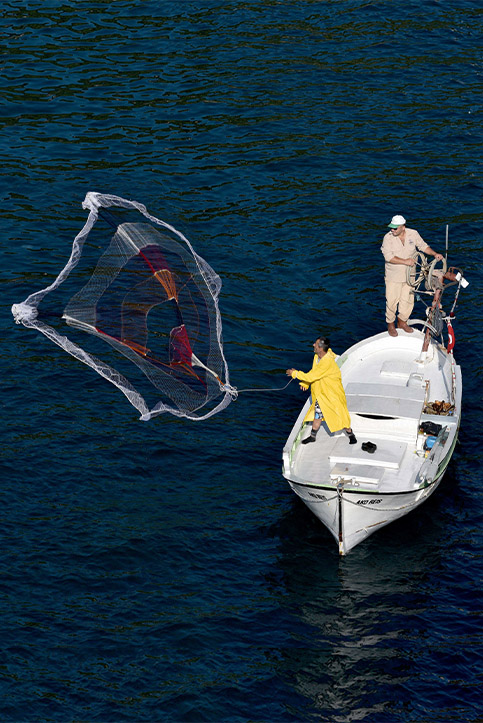History
Since the beginning of time, people living in the Black Sea have been making their living by fishing. That’s how the vast waves and rough waters of the Black Sea have shaped their nature, giving them agility and strength. Offering thank, they take care of every living being both in the sea and on the land.
Aquaculture started in the early 1990’ies in the Black Sea region of Türkiye by the efforts of Central Fisheries Research Institute (SUMAE), the official partner of Turkish Salmon From Black Sea. Since that time, we worked hard, tried hard, learned a lot, and made hundreds of thousands of people eat healthy food, the same food we eat.

The Black Sea is a unique sea basin that is rich in biodiversity, heritage and natural resources
Rich in wildlife and biodiversity, the Black Sea and its surrounding areas are marked by majestic scenery and a rich cultural and natural heritage. This includes not just the sea itself, but the Danube River Delta, Caucasus and Carpathian Mountains as well. The region's waters, coastlines, flooplains and mountains are home to an incredibly diverse range of wildlife and habitats. Bears, wolves and lynx inhabit the old growth forests. In the Black Sea, one still finds bottlenose dolphins and about 180 species of fish, including tuna, anchovy, herring, mackerel and the famous white sturgeon.
Where is the Greater Black Sea Basin?
The Black Sea is a unique marine environment,representing the largest land-locked basin in the world. It is situated at the southeastern edge of Europe and is connected to the remote waters of the Atlantic Ocean via the Marmara, Aegean, and Mediterranean seas through a chain of narrowstraits: Bosporus, Dardanelles, and Gibraltar.
2021 Export Summary
In 2021, the quality products of Turkish Salmon From Black Sea were exported to 31 countries from 4 continents and reached 135 million USD value.


